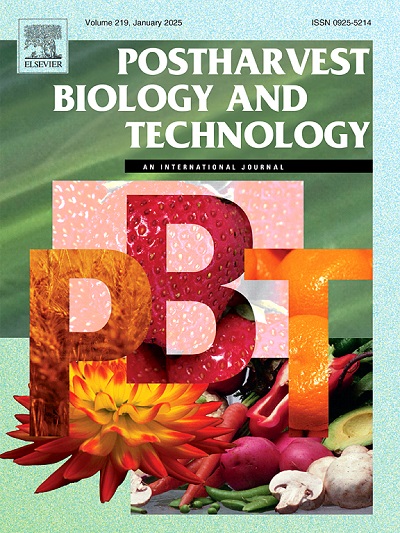The volatile compound (E)-2-hexenal in wampee (Clausena lansium) represses the development of Penicillium italicum and enhances the disease resistance of postharvest citrus fruit
IF 6.4
1区 农林科学
Q1 AGRONOMY
引用次数: 0
Abstract
Wampee (Clausena lansium) is a relative of cultivated citrus in the Rutaceae family. Its cracked fruit in orchard is not susceptible to Penicillium italicum infection, but the mechanism remains unknown. In this study, it was found that the volatiles from wampee leaf (WL) and wampee pericarp (WP) can repress the infection and development of P. italicum in vitro. Additionally, WL exhibited strong antifungal effects in in vivo experiments as well. Antifungal activity analysis of WL volatile organic compounds (VOCs) demonstrated that (E)-2-hexenal is the key antifungal compound against P. italicum by disrupting the integrity of cell membrane. Moreover, exogenous (E)-2-hexenal treatment significantly reduced the area covered by mycelia on citrus fruits and increased the expression of genes and accumulation of various metabolites related to disease resistance. These results indicate that WL can be used as a promising natural preservative in citrus postharvest handling mainly due to the antifungal activity of (E)-2-hexenal.
万皮(Clausena lansium)中的挥发性化合物(E)-2-己烯醛能抑制意大利青霉的生长,增强采后柑橘果实的抗病能力
柑橘(Clausena lansium)是芸香科栽培柑橘的亲戚。其果园中的裂果不易受意大利青霉感染,但其机理尚不清楚。本研究发现,芒皮叶(WL)和芒皮果皮(WP)的挥发性物质可抑制体外青霉的感染和发育。此外,WL 在体内实验中也表现出很强的抗真菌作用。对 WL 挥发性有机化合物(VOCs)的抗真菌活性分析表明,(E)-2-己烯醛是通过破坏细胞膜的完整性来抗击 P. italicum 的主要抗真菌化合物。此外,外源(E)-2-己烯醛处理可显著减少柑橘类水果上菌丝体的覆盖面积,并增加与抗病性相关的基因表达和各种代谢物的积累。这些结果表明,在柑橘采后处理过程中,WL 可以作为一种很有前景的天然防腐剂,这主要归功于 (E)-2- 己烯醛的抗真菌活性。
本文章由计算机程序翻译,如有差异,请以英文原文为准。
求助全文
约1分钟内获得全文
求助全文
来源期刊

Postharvest Biology and Technology
农林科学-农艺学
CiteScore
12.00
自引率
11.40%
发文量
309
审稿时长
38 days
期刊介绍:
The journal is devoted exclusively to the publication of original papers, review articles and frontiers articles on biological and technological postharvest research. This includes the areas of postharvest storage, treatments and underpinning mechanisms, quality evaluation, packaging, handling and distribution of fresh horticultural crops including fruit, vegetables, flowers and nuts, but excluding grains, seeds and forages.
Papers reporting novel insights from fundamental and interdisciplinary research will be particularly encouraged. These disciplines include systems biology, bioinformatics, entomology, plant physiology, plant pathology, (bio)chemistry, engineering, modelling, and technologies for nondestructive testing.
Manuscripts on fresh food crops that will be further processed after postharvest storage, or on food processes beyond refrigeration, packaging and minimal processing will not be considered.
 求助内容:
求助内容: 应助结果提醒方式:
应助结果提醒方式:


